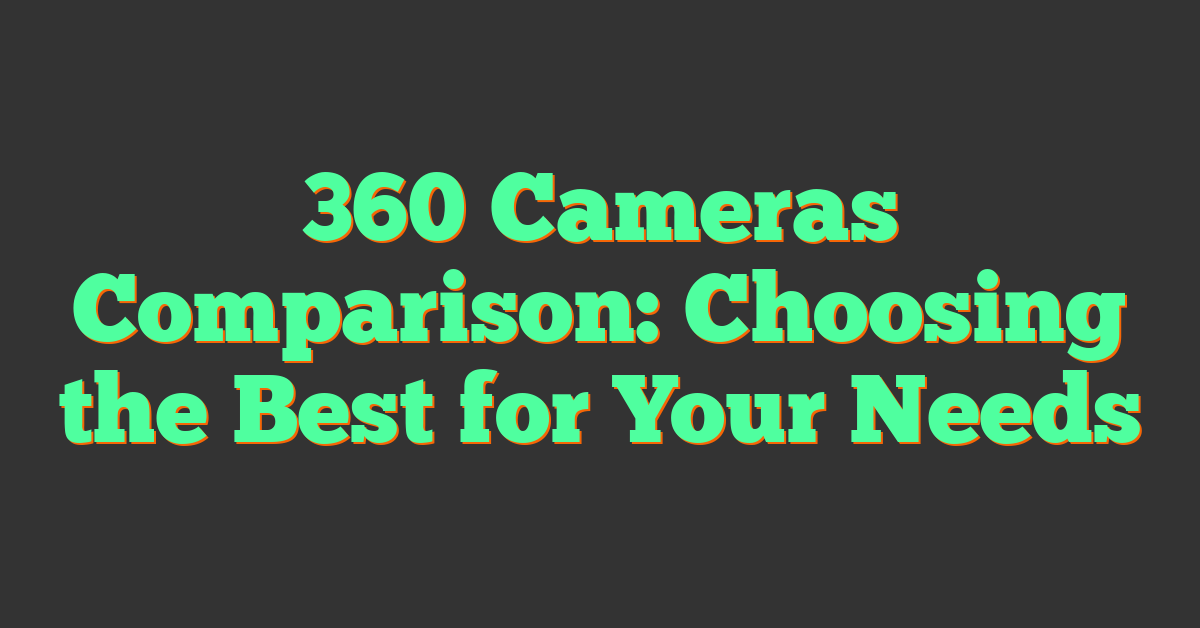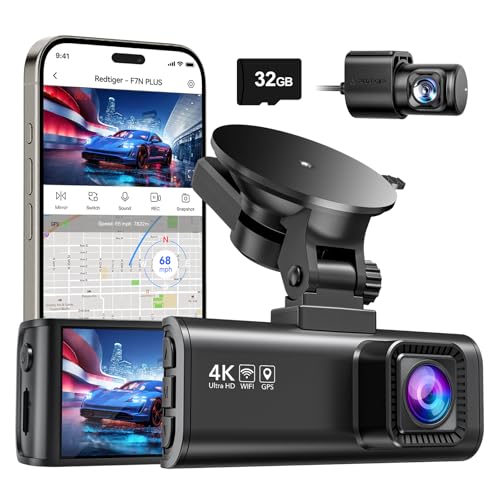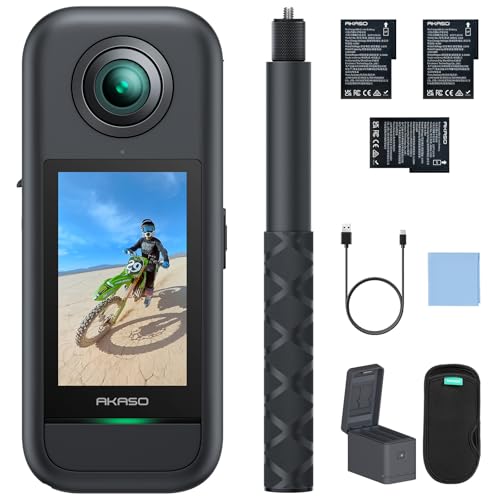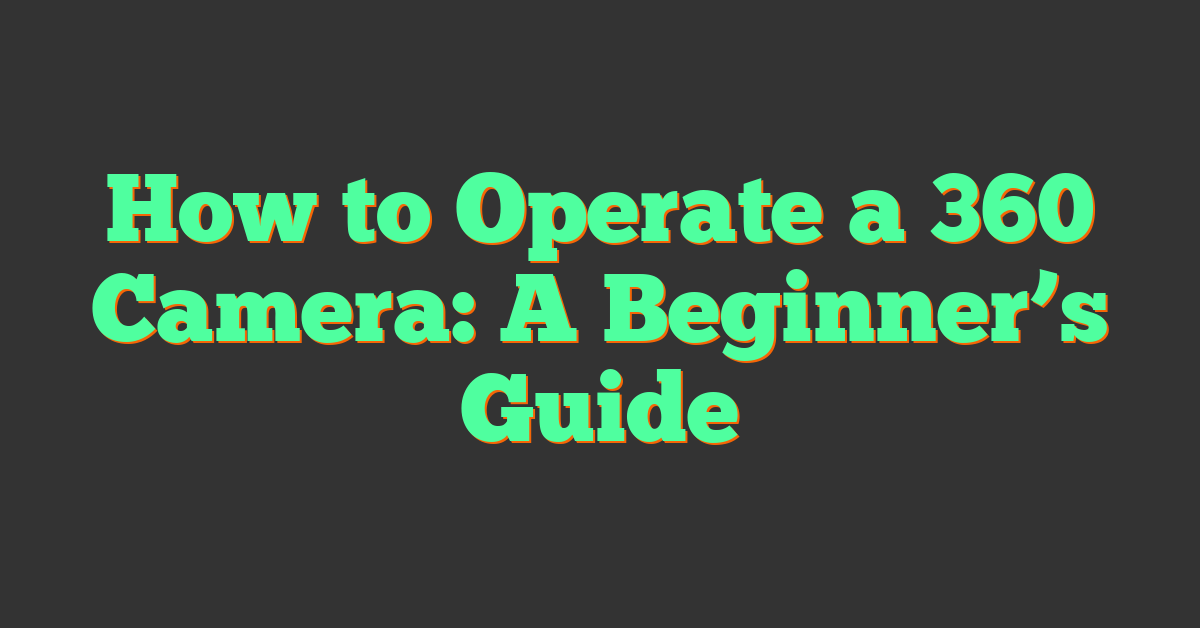360 cameras have revolutionized the way we capture and share experiences. Unlike traditional cameras that record a limited field of view, 360 cameras offer a full spherical capture, ensuring that every angle is covered. This immersive form of photography and videography allows you to revisit moments with a dynamic perspective. Whether you’re an adventurer seeking to document your expeditions or a professional looking to add a new dimension to your work, navigating the world of 360 cameras is both exciting and intricate.

When considering a 360 camera, key features like video and image quality are paramount. Modern 360 cameras are equipped with high-resolution sensors that produce detailed images and crisp video. Storage and battery life are also crucial, as they dictate how much you can shoot before needing a recharge or data transfer. Given the range of 360 cameras on the market, from user-friendly models for beginners to advanced systems with professional-grade capabilities, it’s important to weigh your needs alongside the camera’s features. By doing so, you can find a camera that not only matches your requirements but also enhances your creative possibilities.
Key Takeaways
- 360 cameras offer a spherical view, perfect for capturing immersive content.
- Essential features include high-quality video and image capture, alongside reliable storage and battery life.
- Selection should be based on personal needs, balancing ease of use with advanced functionalities.
What Are 360 Cameras?
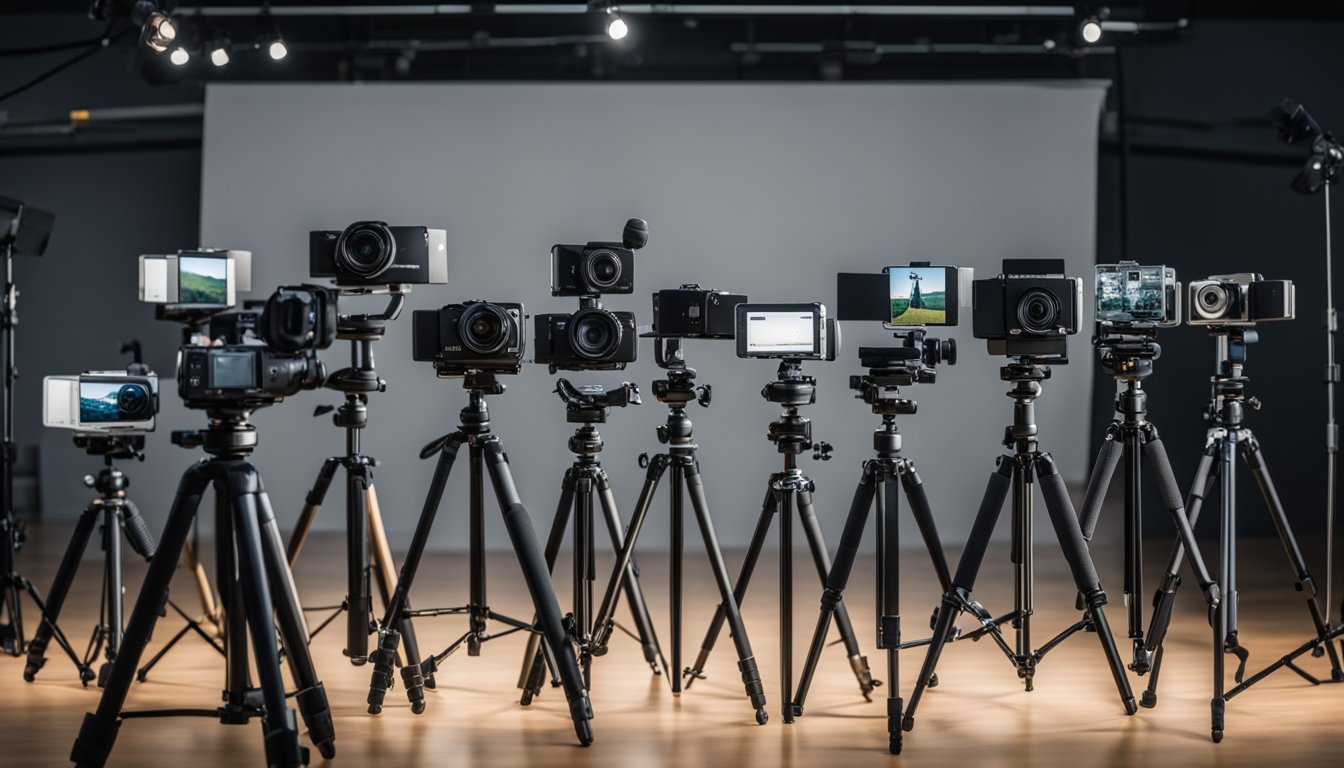
360 cameras, also known as 360-degree cameras, allow you to capture immersive video and images from every direction. They stitch together footage from multiple lenses to create a spherical view of the world around you.
History and Evolution
The concept of capturing a full 360-degree view is not new, but the technology to do it seamlessly has evolved significantly. Early versions required manually stitching together images, but today’s 360 cameras can automatically merge video feeds to create a cohesive panorama. This evolution has transformed the way you capture experiences, from panoramic stills to fully immersive videos that make viewers feel like they’re right there with you.
Types of 360 Cameras
https://www.youtube.com/watch?v=DQJsjzIpbhw&embed=true
When you’re venturing into the world of 360-degree photography, you’ll encounter various types of cameras designed to suit different needs and skill levels. Understanding the differences between them helps you choose the right one for your adventures in capturing everything around you.
Consumer vs. Professional
Consumer 360 Cameras are often more affordable and user-friendly, making them ideal for casual photographers and hobbyists. Products like the Insta360 ONE R and the GoPro Max fall into this category. They usually have a simpler interface and automatic settings, which means you can start shooting with minimal setup.
- Ease of use: Typically designed with an intuitive interface for those not familiar with professional photography equipment.
- Price: More budget-friendly options compared to professional setups.
Professional 360 Cameras, like the Ricoh Theta Z1, offer higher resolution images, better image quality, and more control over settings. These are geared toward professional photographers or those who need high-quality images for commercial purposes.
- High resolution: Offer superior image quality which is necessary for professional applications.
- Advanced features: Includes manual settings for exposure, ISO, and white balance, giving you more creative control.
Stand-Alone vs. Modular
Stand-Alone 360 Cameras are self-contained units with built-in lenses and sensors. They are designed to be ready to shoot straight out of the box. The GoPro Max is an example of a stand-alone camera that’s great for quick and easy shooting with no fuss.
- Convenience: Everything you need is included in a single device.
- Portability: Compact and easy to carry, ideal for travel and on-the-go photography.
Modular 360 Cameras like the Insta360 ONE R adopt a modular design, allowing for different camera modules to be attached or removed. This versatility lets you customize the camera to fit various shooting scenarios.
- Flexibility: Swap different modules to adapt to different filming conditions.
- Upgradability: Future-proof your investment by updating individual components rather than the entire camera.
Key Features to Consider in 360 Cameras
« How Does a 360 Camera Work: Capturing the World in Every Direction
Best Tripods for 360 Cameras: Top Picks for Stunning Panoramas »
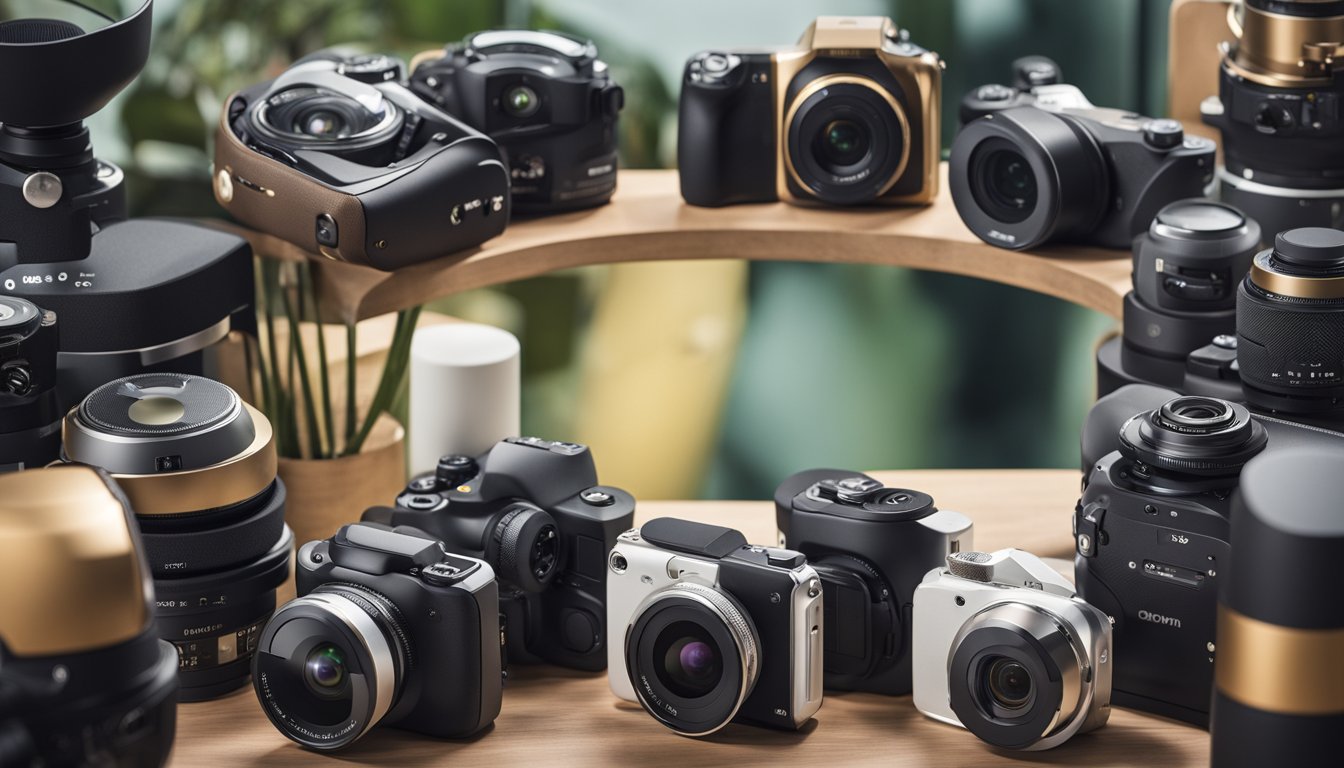
In the world of 360 cameras, specific features can greatly enhance your user experience. It’s essential to focus on resolution, stabilization, build quality, and connectivity to get the most out of your 360 camera.
Resolution and Video Quality
When considering a 360 camera, resolution and video quality are pivotal. Cameras, like the Insta360 X3, typically support 5.7K30 video, offering a crisp and immersive viewing experience. A higher resolution ensures your videos have more detail and clarity, especially important since 360-degree videos are stretched over the entire sphere around you.
Image Stabilization Methods
Image stabilization is key for producing smooth and professional-looking videos. Look for cameras with advanced stabilization methods, as this will counteract the movements during recording. Some cameras use gyroscopic stabilization to ensure that your footage remains steady, no matter the activity.
Durability and Build Quality
Your 360 camera’s durability and build quality are critical, especially if you plan to use it in rugged conditions. Features like being waterproof can make or break your experience. Cameras such as the GoPro Max offer robust construction and waterproof capabilities, making them versatile for all adventures.
Camera Connectivity and Software
Finally, consider the camera connectivity and software options. Seamless connectivity to your devices, like smartphones and computers, allows for easy transferring and editing of your footage. The accompanying software can greatly enhance your editing capabilities, enabling features like overcapture, where you can create standard video from your 360 content with dynamic perspectives.
Comparison of Popular 360 Camera Models
https://www.youtube.com/watch?v=DUpnMRs_m00&embed=true
When looking at the expansive world of 360 cameras, you’ll find innovative options from GoPro, Ricoh, and Insta360, each offering unique features that could elevate your photography and videography. Let’s zoom in on their current lineups.
GoPro 360 Camera Lineup
GoPro Max delivers with its rugged design and an array of features ideal for adventure seekers. You can capture immersive 360 footage with a resolution of up to 5.6K and enjoy powerful stabilization that GoPro is known for. It’s not just about the video, the Max also provides spherical audio, ensuring your immersive content also has the sound to match.
Ricoh 360 Camera Series
With Ricoh Theta X, you get a device that merges high-quality imaging with practical usability. This camera is capable of shooting impressive 360 photos at 11K resolution and video at 5.7K. The Theta X appeals to those who prioritize detail and clarity in their 360 content, along with appreciating the camera’s intuitive touchscreen.
Insta360 Camera Range
The Insta360 X3 is a versatile option in the Insta360 range, integrating FlowState Stabilization to ensure smooth video, coupled with 360 Horizon Lock to maintain a level horizon. With a 72MP photo resolution and capability to shoot 5.7K video, the X3 is a solid contender if high-quality visual output is top on your list. Besides, Insta360’s range also offers options like the ONE RS which cater to both 360 and 4K wide-angle shooting, ensuring there’s a camera for every type of creator.
Performance in Various Conditions
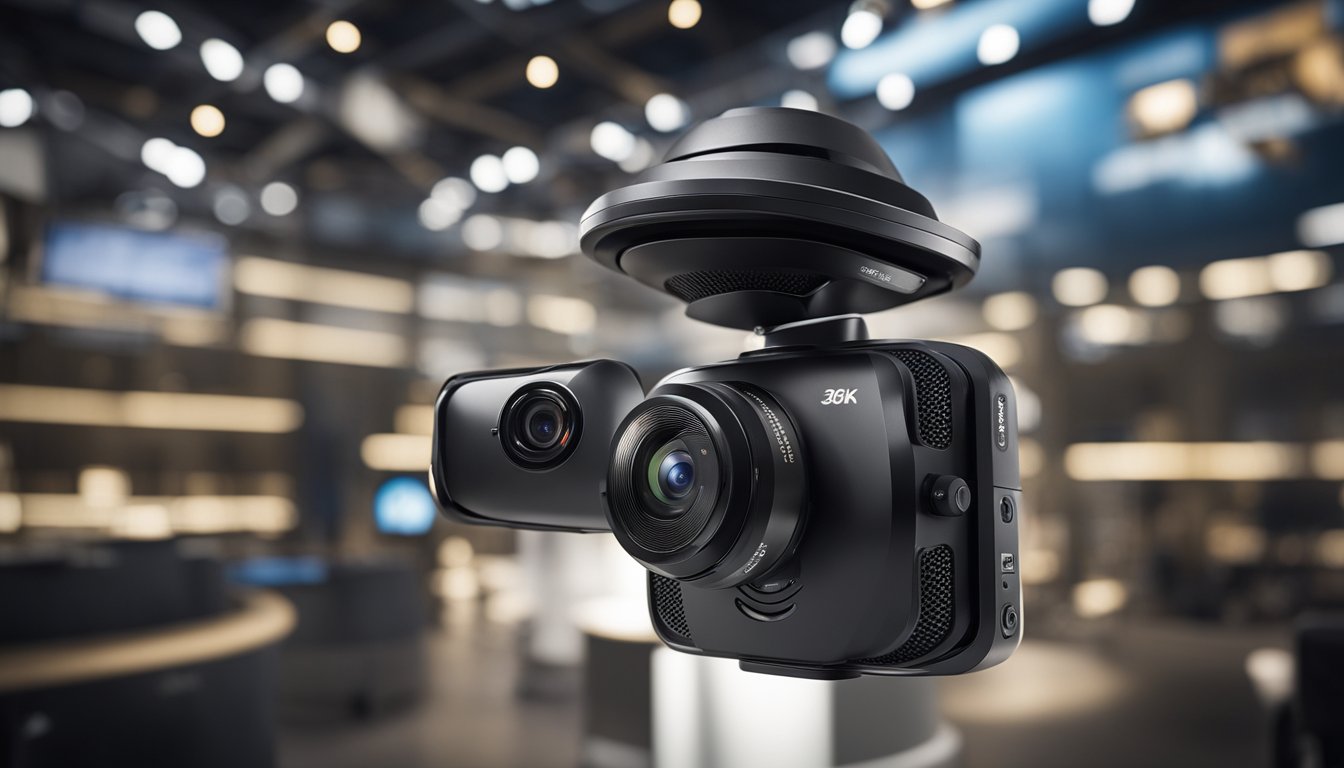
When you’re considering a 360 camera, it’s crucial to understand how they handle different shooting scenarios. Each environment can bring unique challenges, often affecting the overall image quality. Let’s look at how different cameras might perform in low light conditions, underwater, or while capturing fast-moving action.
Low Light Environments
In low light, your camera’s sensor and lens quality are paramount. The Ricoh Theta Z1 shines here due to its larger sensor that can capture more detail with less noise. Low light performance improves significantly with cameras that offer manual settings, giving you control over shutter speed and ISO.
Underwater Shooting
If you’re diving into underwater photography, water resistance is a feature you can’t ignore. A camera like the GoPro Max is praised for its waterproof abilities up to 5 meters without a case. Remember, maintaining image quality underwater requires good lighting and clarity.
High-Speed Action Capture
Capturing the thrill of high-speed activities demands a camera that can keep up. The Insta360 X3 is often favored for these scenarios, offering stabilization and a high frame rate to ensure smooth and clear footage even when things are moving fast. Always check if your camera has a mode specifically for action to get the best results.
Storage and Battery Life
https://www.youtube.com/watch?v=IfmgSuIRi_o&embed=true
When it comes to capturing high-quality 360-degree content, having ample storage and reliable battery life is critical. You’ll want to ensure your camera supports high-capacity memory cards and offers a battery that can keep up with your adventures.
Memory Card Compatibility
Most 360 cameras offer microSD card support as this format is both compact and has sufficient capacity for large video files. For instance, the Insta360 X3 can work with microSD cards up to a certain size, offering you the flexibility to shoot longer without worrying about running out of space. Always check the maximum supported card size because you don’t want to miss out on any footage due to space constraints.
- Supported card types: microSD, SD card
- Maximum size: Varies by model
Battery Longevity
Your 360 camera’s battery life is just as important as the storage. Typically, batteries can last anywhere from 1 to 3 hours on a full charge, depending on your camera’s model and how you’re using it. The GoPro Max, for example, is known for its robust battery, perfect for extended shooting sessions. Moreover, some cameras offer removable batteries, so you can carry extras and swap them out as needed.
- Expected battery duration: 1-3 hours
- Removable battery: Available in some models
Remember, for the best experience, opt for high-capacity memory cards and spare batteries if your camera supports them.
360 Cameras for Different User Demands
https://www.youtube.com/watch?v=EqzqBFLTrFE&embed=true
360 cameras offer versatile solutions to meet varied filming and photography needs. Whether you’re a vlogger, a real estate agent, or an adrenaline junkie, there’s a camera designed to cater to your specific demands.
For Content Creators and Vloggers
If you’re a content creator aiming to captivate your YouTube audience with immersive experiences, you’ll benefit from a 360 camera that promises high-resolution output and seamless integration with different platforms. The Insta360 X3, known for its vibrant color capture and robust stabilization, can be a solid choice. It allows you to creatively reframe shots in post-production, ensuring that your viewers always have the best seat in the house.
For Real Estate and Virtual Tours
When your goal is to showcase properties with crystal-clear clarity, a camera like the Aleta S2C excels. It’s specifically designed for high-resolution 360 photos, essential for real estate showcases and virtual tours. Its high megapixel count and exposure control make it possible for you to provide potential buyers with a detailed and realistic view of the space, all from their digital device.
For Outdoor and Extreme Sports
For the thrill-seekers and outdoor enthusiasts, durability and performance in challenging environments are key. The GoPro Max, a camera that doubles as an action cam, offers rugged build and waterproof qualities, making it suitable for capturing breathtaking 360 footage, whether you’re skydiving or surfing. Pair it with drones for epic aerial shots, and never miss the intensity of the moment.
Advanced 360 Camera Capabilities
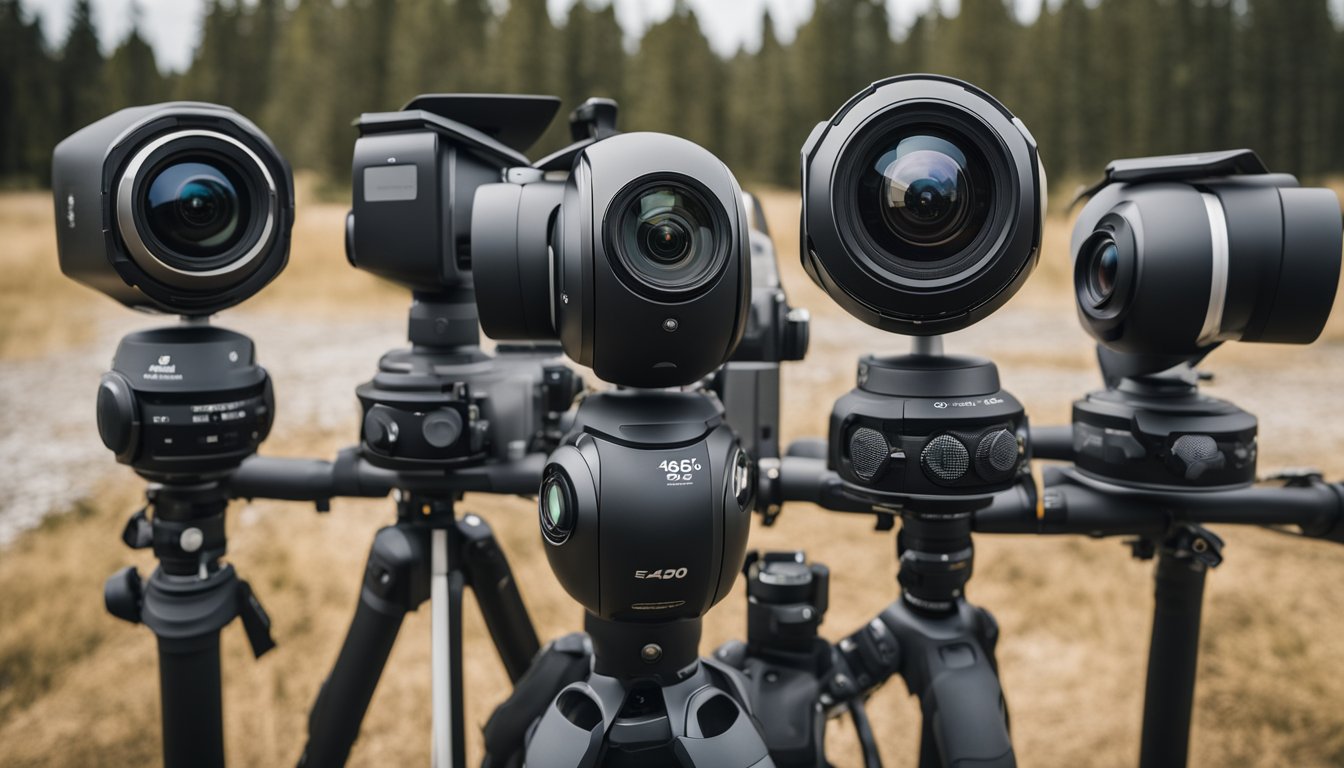
When exploring the world of 360 cameras, you’ll find that they come packed with cutting-edge features. Let’s look at how these capabilities, like creating immersive 3D environments and live streaming, can enhance your experience.
3D and Virtual Reality
With 360 cameras, you can capture scenes in 3D to create a virtual reality (VR) experience. Devices like the Insta360 Evo make it possible for you to not just watch a video but to be a part of it. Stepping into the scene, you can look around in a full 360-degree sphere and, with VR headsets, feel as if you’re actually there.
Live Streaming and Webcasting
Moreover, your 360 camera allows for live streaming. Imagine webcasting life’s big moments in 360 degrees, like with the GoPro Max, where viewers can see everything as it happens. This isn’t just tilting a phone left and right but letting your audience spin the virtual world around them with their cursor or VR headset, ensuring they don’t miss a thing.
Understanding 360 Camera Accessories
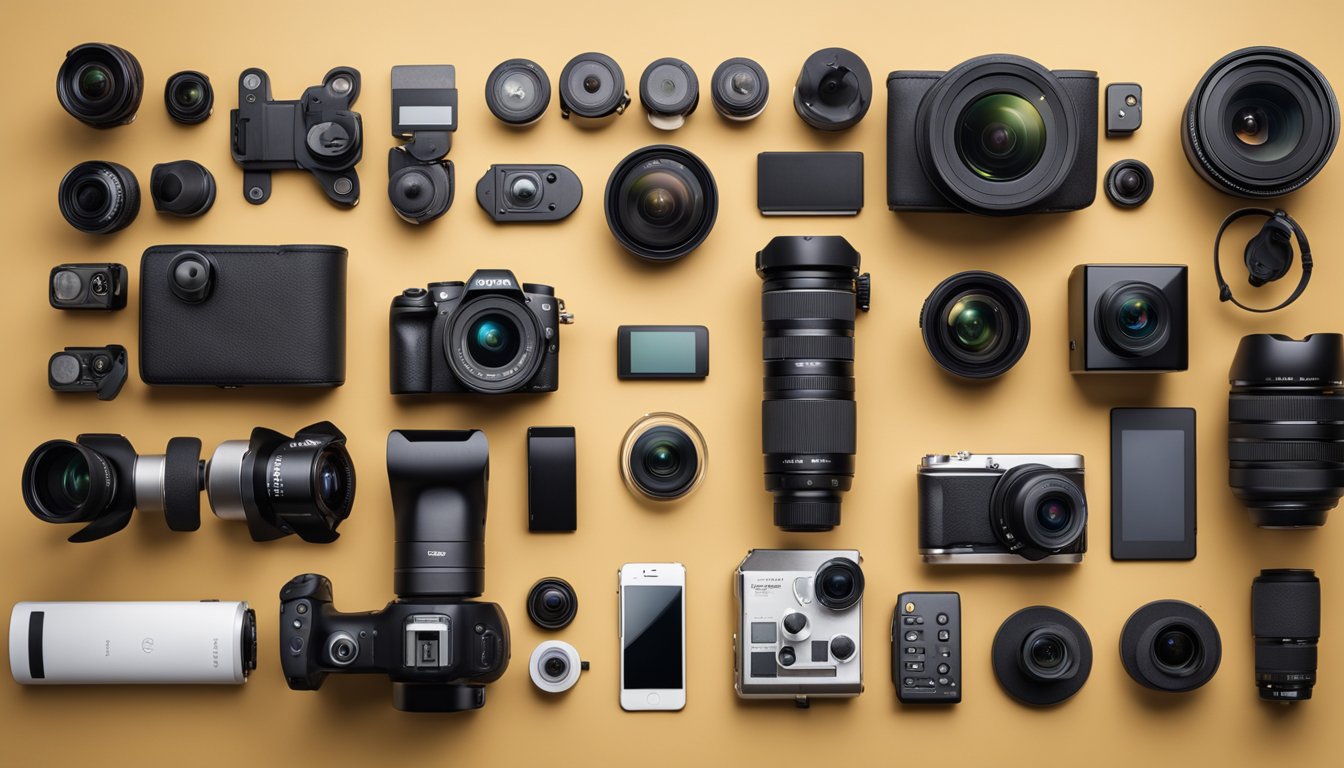
Accessorizing your 360 camera can greatly enhance your photography and video capturing experience. From securing your camera to protecting it, the right accessories are crucial.
Essential Tripods and Mounts
Investing in a sturdy tripod is a key step to ensure stability and capture clear 360-degree shots. Tripods for 360 cameras are specifically designed to be invisible to fisheye lenses, so your immersive videos remain unobstructed. Look for tripods with adjustable legs and a compact design for easy travel. Mounts also play a significant role, especially if you’re looking to attach your camera to helmets, bikes, or other surfaces for a unique perspective.
- Tripods:
- Invisible design
- Adjustable height
- Compact for portability
- Mounts:
- Helmet mounts
- Adhesive mounts for smooth surfaces
- Versatile clamps
Protective Gear and Cases
Your 360 camera is an investment, and it’s important to protect it with the right gear. A durable case is essential for transport and when you’re not using your camera. Look for cases that are cushioned and water-resistant to shield from bumps and weather. Also, consider lens protectors or silicone skins to protect the sensitive fisheye lenses from scratches or impacts.
Cases:
- Cushioned interior
- Water-resistant material
Lens Protection:
- Fisheye lens protectors
- Silicone skins for the body
Choosing the Right 360 Camera for You
https://www.youtube.com/watch?v=5MvtlBYOFHg&embed=true
When you’re in the market for a 360 camera, you want to consider your budget and the quality of footage you’re aiming to capture. Let’s explore options that are easy on your wallet and those that hit the sweet spot of price and performance.
Budget-Friendly Options
If you’re looking for a 360 camera that won’t break the bank, keep an eye out for models that offer essential features without the premium cost. For instance, the Insta360 ONE RS Twin Edition strikes a balance between affordability and functionality, as noted by Digital Camera World. Another camera to consider might be the Ricoh Theta X, which is acknowledged for being accessible while providing decent quality.
- Key Features to Look for:
- High enough resolution for clear images
- Basic stabilization for smooth footage
- Compatible with your current devices and software
Best Overall for Quality and Features
When your focus is on top-notch quality and advanced features, the Insta360 X3 stands out, often cited as a favorite by PCMag for its 5.7K30 video and creative features. Another strong contender is the GoPro Max, well-regarded for its robust design and excellent stabilization capabilities.
- What to Expect from High-End Cameras:
- 5.7K or above video resolution
- Superior stabilization technology
- Extensive creative modes and editing software compatibility
By considering these options, you should be able to find a 360 camera that fits your needs and your budget.
Maintaining and Updating Your 360 Camera
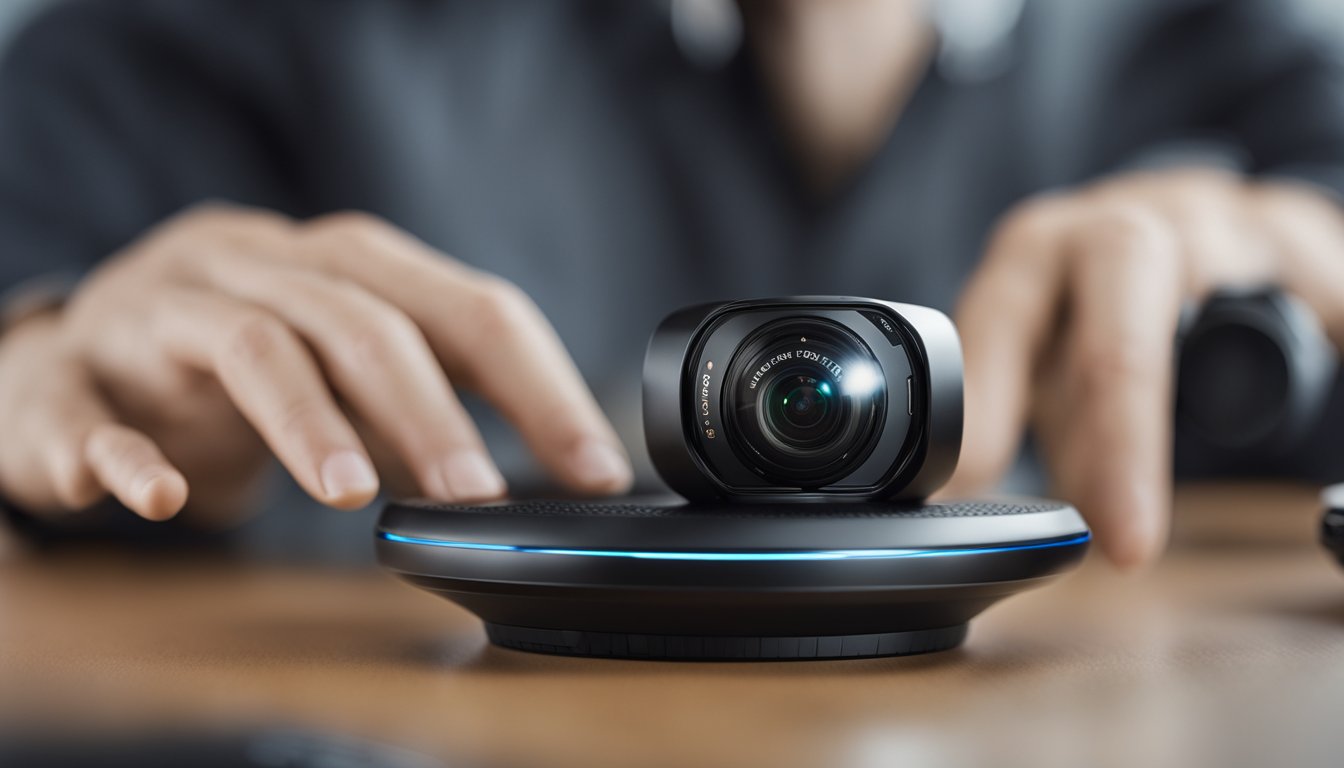
Keeping your 360 camera in top condition involves regular firmware updates and proper handling. By focusing on these key aspects, you ensure the longevity and performance of your device, especially in areas like software efficiency and stabilization quality.
Firmware and Software Updates
Regularly check for firmware updates from the manufacturer’s website or companion application. These updates often include:
- Improvements in image stabilization: To keep your videos smooth, manufacturers frequently refine the camera’s stabilization algorithms.
- Enhanced features: New software can unlock additional functionality, keeping your camera competitive.
- Bug fixes: Updating can resolve any known issues that might affect your camera’s performance.
To update your firmware:
- Download the latest firmware to your computer or directly through the camera’s app if supported.
- Transfer the firmware to your camera, usually via a USB connection or memory card.
- Install the update by following the manufacturer’s instructions carefully to avoid any mishaps.
Handling and Care
Treat your 360 camera with care to maintain its solid build quality:
- Store your camera in a dry, cool place when not in use.
- Clean the lenses with a soft, microfiber cloth to keep them free of fingerprints and dust.
- Protect the camera body by avoiding drops or impacts, which could compromise the casing and internal components.
For longevity:
- Use protective cases when transporting your camera.
- Avoid exposing your camera to extreme temperatures and conditions for extended periods.
- Charge your camera with the official charger to ensure the battery stays in good health.
Frequently Asked Questions
https://www.youtube.com/watch?v=5xds4olIjw0&embed=true
Exploring the world of 360 cameras opens up a new dimension of photography and videography for you. These FAQs are designed to guide you in understanding the key aspects of choosing the right 360 camera for your needs.
What are the top contenders for the best low-light performance in 360 cameras?
For low-light conditions, cameras like the Ricoh Theta Z1 and the Insta360 ONE X2 stand out for their larger sensors and advanced lenses that capture more light, delivering clearer images even with limited ambient illumination.
Can the Insta360 camera be considered the best option for 2023?
Yes, the Insta360 X3 can be considered one of the best options for 2023 due to its improved image quality, versatility, and user-friendly interface, which are great for both beginners and experienced users who want to create immersive 360 content.
What features should I look for in a 360 camera when using it for virtual tours?
For virtual tours, look for a 360 camera that offers high resolution for detailed images, robust stitching software to seamlessly merge the images, and the ability to shoot in HDR to balance light and dark areas—features that the Ricoh Theta X exemplifies.
How do 360-degree action cameras differ from traditional ones for dynamic activities like motorcycling?
360-degree action cameras, unlike traditional ones, can capture a full spherical view of the surroundings, allowing you to relive the experience from every angle. They often come with stabilization features, as seen in the GoPro Max, which are crucial for high-movement activities like motorcycling.
Is 4K resolution the standard for high-quality 360 cameras?
While 4K resolution is becoming more common and can be considered a current standard for good quality, there are 360 cameras available that offer 5.7K and even 8K resolutions, providing even sharper and more detailed imagery for professional-quality results.
How does 360 camera pricing vary based on features and quality?
360 camera pricing can range from affordable, entry-level models with basic capabilities to high-end cameras with advanced features like higher resolution, better low-light performance, and superior stabilization, as seen with the Kandao QooCam 8K and professional-grade options. Consider priorities like image quality and versatility against your budget.

